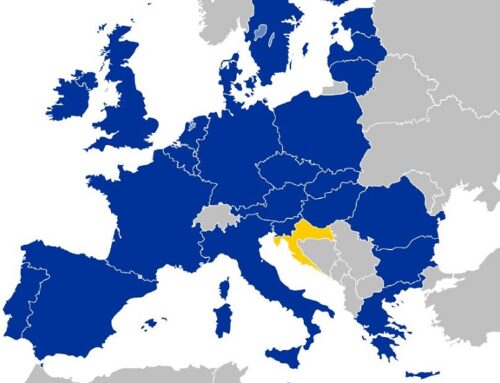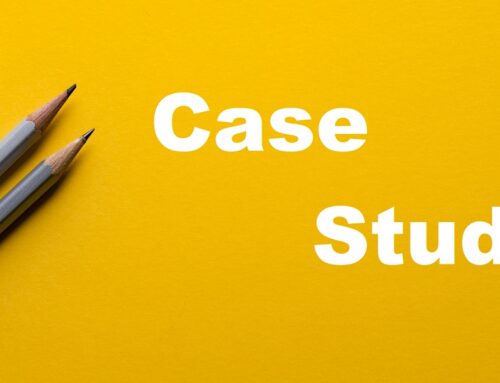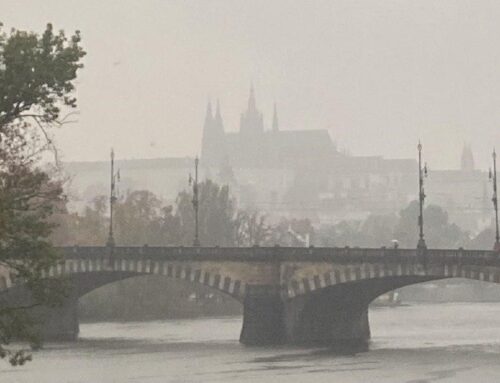The war in eastern Ukraine broke out in 2014 after Russia’s annexation of the Crimean Peninsula and became one of the largest military conflicts on the European continent in the last decades. Concurrently, the self-declared Donetsk and Luhansk People’s Republics (DPR and LNR respectively) in Donbas with substantial ethnic Russian populations received support from the Kremlin and openly expressed their opposition against the Ukrainian government’s plans of closer association with the European Union [1,2,3]. A chain of events led to an anti-terrorist operation launched by Kyiv to curb separatist movements in the two unrecognized entities. To date, the conflict despite having entered a low-intensity phase has not ended, and more than 13,000 people died, according to the UN [4].
Positions of the Key Parties
The international community has undertaken continuous attempts at settling the armed conflict in the Donbas region and several major powers representing contrasting interests have emerged on the stage. On one side of the spectrum is Russia whose immediate interests involve maintaining its military security and preventing Ukraine from drifting away towards the EU by providing various kinds of support to the DPR and LNR [5]. The latter unrecognized republics strive for federal autonomy, which would grant them and Moscow an upper hand in the domestic discussion over Ukraine’s foreign policy direction, including its association with the European Union [6,7]. Kyiv, on the other hand, represented by young president Volodymyr Zelenskyy does not wish to be part of the Russian sphere of influence and has repeatedly called on the EU and NATO to accept it to their ranks [8]. Consequently, granting autonomy to Donetsk and Luhansk at the very least can become an obstacle on Ukraine’s way to the European family or lead to an expansion of Russia’s influence in the country [9,10,11].
Another set of players is represented by France and Germany that have taken up the duty of mediators in the peace process in Donbas. Success of this undertaking would solidify Germany’s political standing in Europe after Chancellor Angela Merkel steps down this year and a new incumbent takes office [12]. French President Emmanuel Macron’s interest in brokering the process appears to stem from his aspirations to take a more assertive role in the avant-garde of European politics [13].
The Normandy Format and the Minsk Agreements
The leaders of the four listed parties, excluding the unrecognized separatist republics, launched negotiations over the conflict in Donbas in 2014. This process is known as the Normandy Format named after the venue of the first meeting during the celebration of the 70th anniversary of the D-Day [14,15]. The same year another negotiating track within the so-called Trilateral Contact Group involving representatives of Ukraine, Russia, and the OSCE was introduced which culminated in the Minsk Protocol (aka the first Minsk agreement) aimed at ending the war [16,17]. The signatories of the agreement included also the DPR and LNR representatives. However, the agreement failed to prevent hostilities and the Normandy Four developed a new set of peacemaking measures named Minsk II that was signed in February 2015 by the Russian ambassador to Ukraine, leaders of the separatist republics, and representatives of the OSCE and Ukraine [18].
Key points of the agreement included an immediate ceasefire, the pullout of weaponry and armed forces, disarmament, and the preparation of free elections in the Donetsk and Luhansk oblasts (regions). To date, the participants of the armed conflict have not implemented any of the provisions of the Minsk II accords due to ongoing violations but the agreement remains the main legal modus operandi of the peace process.
Relative Success
The negotiation process over Donbas, however, has not only been accompanied by failures. The December 2019 Normandy Four summit attended by German Chancellor Angela Merkel, French President Emmanuel Macron, Russian leader Vladimir Putin, and a newly elected President of Ukraine Volodymyr Zelensky, was convened for the first time since 2016 and added hopes for consequent conflict resolution. Specifically, the parties confirmed their commitment to the Minsk II and agreed to exchange prisoners. An important event paving the way to the summit was Kyiv’s agreement to signing up for the so-called Steinmeier Formula [19,20], which was largely supported and viewed by Russia as a prerequisite for the December summit of the Normandy Four. According to the formula proposed in 2016 by then Germany’s foreign minister Frank-Walter Steinmeier, the signatories (the DPR and LPR, Ukraine, Russia, and the OSCE) should agree to hold free and transparent elections in the separatist oblasts with their subsequent integration into Ukraine under a special autonomous status.
Stumbling Stones
Nevertheless, the negotiations made little headway since 2019. In particular, structural deficiencies of the talks and the lack of political will to find middle grounds presuppose the absence of visible achievements. Since 2014 the leaders of the Normandy Four have held full-fledged summits at the highest level only six times while having delegated practical talks and additional consultations to lower-level officials who have been meeting online since the pandemic.
This trend of down-scaling the negotiations signals the declining momentum of the format as the Russian side, in particular, does not wish to engage in discussions until the concrete steps to implement the Minsk II measures are taken. In addition, it marks the difficulty of bridging the views of the Kremlin and Kyiv over the role of principal parties and the sequence of the conflict resolution process. Moscow does not consider itself as a participant of the armed confrontation with Ukraine [21] but rather a mediator [22,23] pushing the negotiations in the realm of the Trilateral Contact Group where it plans that Kyiv will communicate directly with its opponents – namely the Donetsk and Luhansk People’s Republics. Kyiv declined to negotiate with the separatists [24] and argues that it needs to get back control over its border with Russia and the presence of the Russian forces in Donbas renders it impossible to hold transparent elections in the region, thus the withdrawal of Russia’s troops is of immediate importance. The Kremlin brushes off these statements and insists on conducting elections in Donbas first before the control of Ukraine’s eastern-most border can be handed from the separatists back to Kyiv [25].
A Way Out or a Dead End?
Last month, in the midst of a new round of escalation on the Russian-Ukrainian border [26] Volodymyr Zelenskyy demonstrated his diplomatic and PR skills visiting the war-torn frontline of Donbas [27] and meeting with his German and French counterparts [28]. Moreover, Zelenskyy renewed calls for revitalizing the Normandy Format by including powerful players, such as the US, Canada, and the UK, as well as for changing the Minsk agreements towards more flexibility [29]. Both points have faced a cold reaction from the Kremlin and Washington, meaning that Zelenskyy’s diplomatic maneuvering has not brought desired outcomes. Moscow stated clearly that it would not agree to modify the accords [30]. The American side decided not to comment on its possible participation in the Normandy Format, however, said that it considers the Minsk agreements a basis for diplomatic resolution of the conflict in eastern Ukraine [31, 32]. Also, it looks quite unrealistic for the United Kingdom, Canada, or the US to join the Normandy Format as none of them is a participant of the Minsk mechanism [33]. On top of that, Zelenskyy reverted back to his initial plan of having a conversation with Putin, first proposing telephone talks, which were turned down in the Kremlin [34], and a meeting with his Russian counterpart anywhere suitable, even in the Vatican [35]. Meanwhile, the Kremlin looks unwilling to return to the table, as Putin predictably stated his openness to talk to Zelenskyy about normalizing bilateral ties but not about the ongoing conflict in Donbas [36].
References:
1 www.consilium.europa.eu/en/documents-publications/treaties-agreements/agreement/?id=2013005
2 Yekelchyk, The Conflict in Ukraine What Everyone Needs to Know
3 Wilson, Ukraine Crisis: What It Means for the West
4 www.ohchr.org/Documents/Countries/UA/29thReportUkraine_EN.pdf
5 informnapalm.org/en/database-russian-weaponry-donbas
6 www.chathamhouse.org/2020/05/minsk-conundrum-western-policy-and-russias-war-eastern-ukraine-0/minsk-2-agreement
7 huri.harvard.edu/normandy-format-summit-huri-experts-respond
8 www.president.gov.ua/en/news/intervyu-prezidenta-ukrayini-gazeti-le-figaro-68029
9 carnegie.ru/commentary/84262
10 jamestown.org/program/does-the-normandy-group-on-the-russia-ukraine-conflict-have-a-future-part-one
11 pism.pl/publications/The_Normandy_e_Format_SummitNo_Real_Progress_
12 www.brookings.edu/blog/order-from-chaos/2021/04/19/planning-a-trip-to-paris-ukraines-zelenskiy-has-much-to-gain
13 jamestown.org/program/does-the-normandy-group-on-the-russia-ukraine-conflict-have-a-future-part-one
14 en.wikipedia.org/wiki/Normandy_Format#cite_note-1
15 www.csis.org/analysis/impact-normandy-format-conflict-ukraine-four-leaders-three-cease-fires-and-two-summits
16 www.chathamhouse.org/2020/05/minsk-conundrum-western-policy-and-russias-war-eastern-ukraine-0/minsk-1-agreement
17 www.osce.org/ru/home/123258
18 www.osce.org/ru/cio/140221
19 www.president.gov.ua/en/news/zagalni-uzgodzheni-visnovki-parizkogo-samitu-v-normandskomu-58797
20 www.rferl.org/a/what-is-the-steinmeier-formula-and-did-zelenskiy-just-capitulate-to-moscow-/30195593.html
21 tass.ru/mezhdunarodnaya-panorama/11267351
22 carnegie.ru/commentary/84262
23 jamestown.org/program/does-the-normandy-group-on-the-russia-ukraine-conflict-have-a-future-part-one
24 www.president.gov.ua/en/news/volodimir-zelenskij-zaklikaye-do-modernizaciyi-ta-osuchasnen-68153
25 pism.pl/publications/The_Normandy_e_Format_SummitNo_Real_Progress_
26 www.bbc.com/news/world-europe-56842763
27 https://www.president.gov.ua/en/news/prezident-perebuvaye-z-robochoyu-poyizdkoyu-na-donbasi-67857
28 https://www.president.gov.ua/en/news/volodimir-zelenskij-mayemo-ruhatisya-do-zustrichi-lideriv-no-68041
29 www.ft.com/content/ed40d675-16b3-4a35-a157-b9bf0078b507
30 tass.ru/politika/11244017
31 tass.ru/mezhdunarodnaya-panorama/11249355
32 tass.ru/mezhdunarodnaya-panorama/11250005
33 www.rbc.ru/politics/26/04/2021/6086aca79a79478d3d195b81
34 www.kyivpost.com/ukraine-politics/zelensky-requested-talks-with-putin-back-on-march-26.html
35 www.repubblica.it/esteri/2021/04/28/news/zelensky_and_the_war_in_ukraine_a_meeting_with_putin_in_vatican_
to_sign_the_peace_agreement_-298491225
36 tass.ru/politika/11221711




